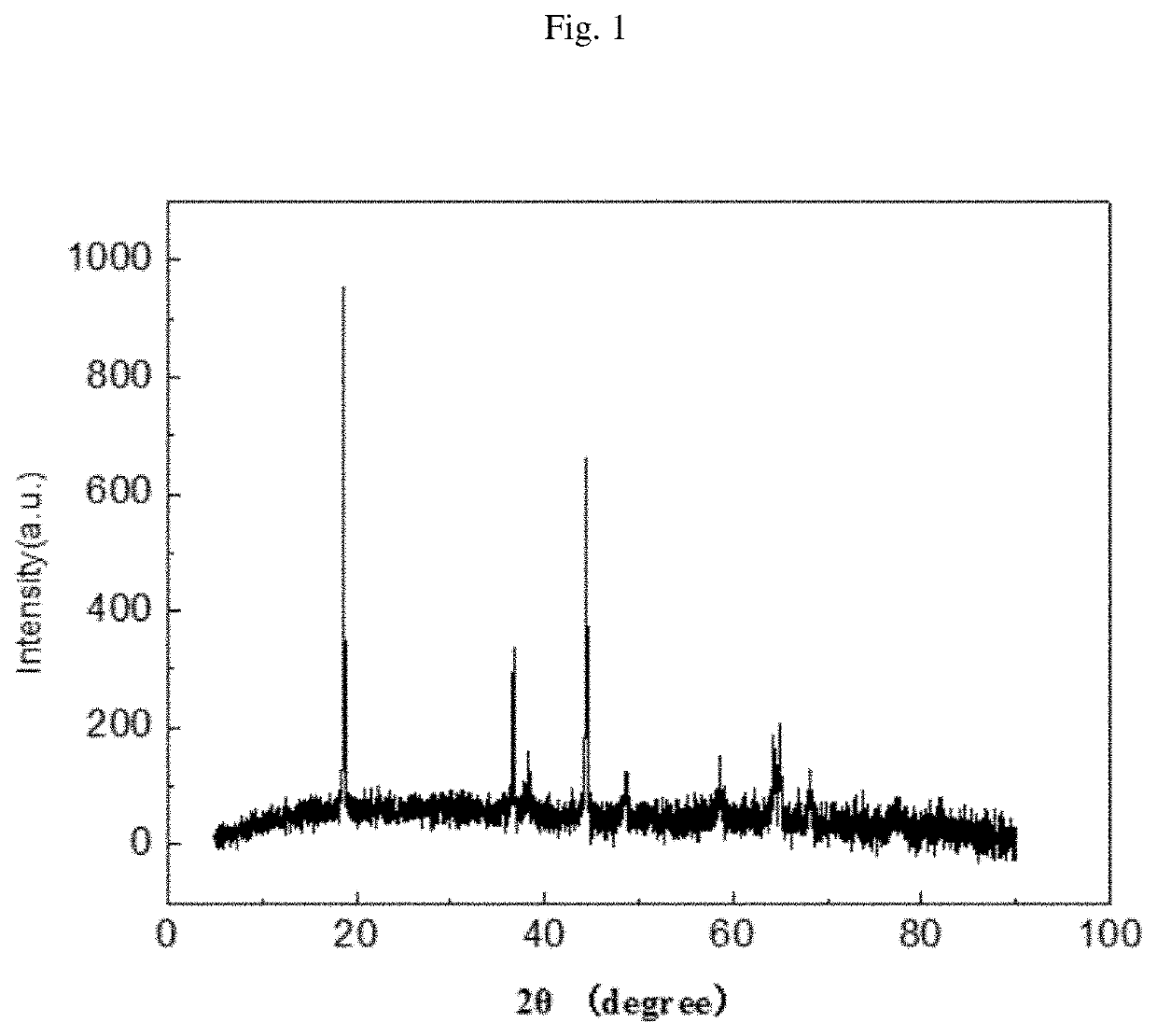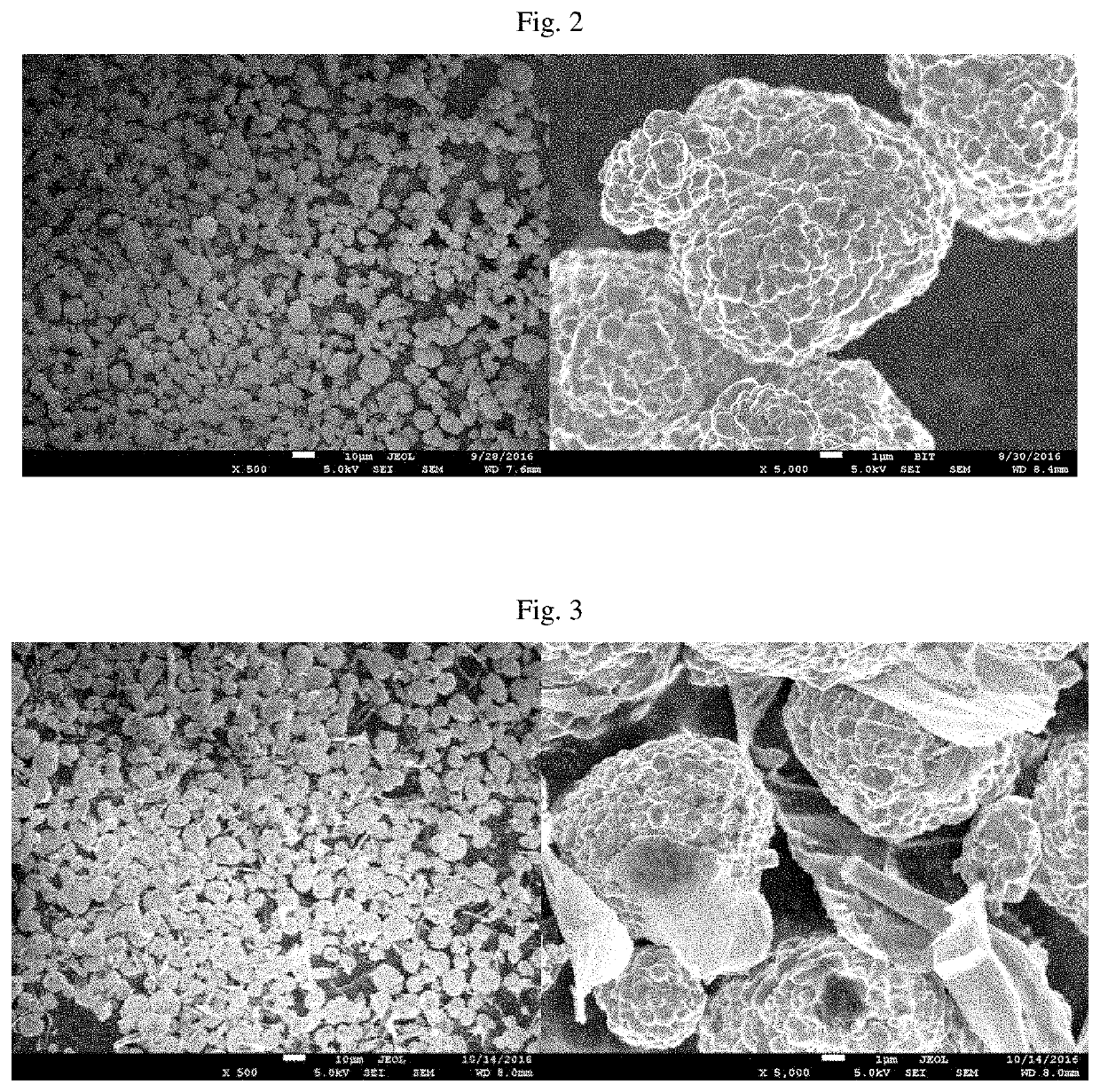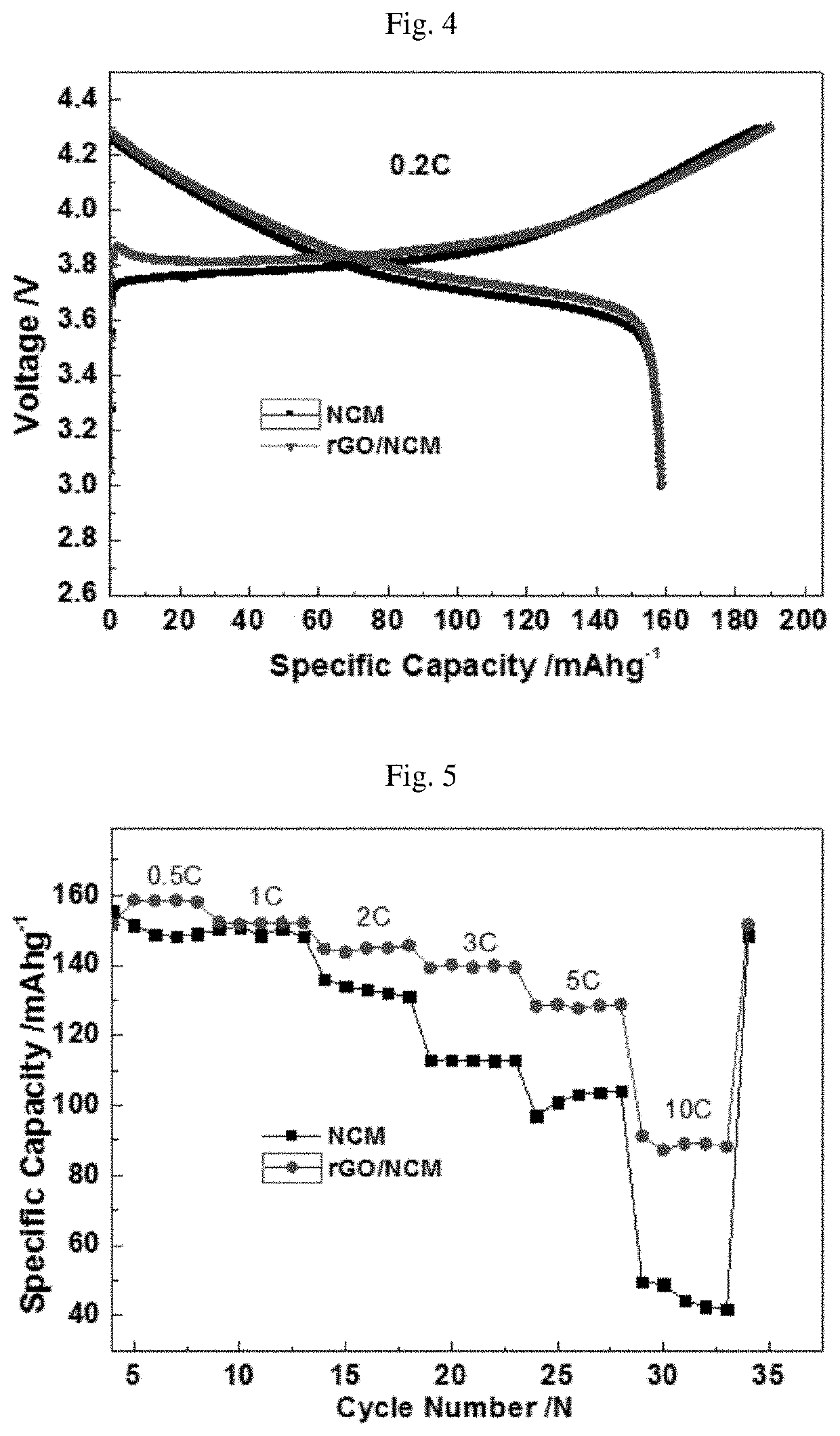Method for preparing graphene/ternary material composite for use in lithium ion batteries and product thereof
a lithium ion battery and graphene technology, applied in the field of lithium ion battery materials, can solve the problems of poor consistency, poor safety, high cost, etc., and achieve the effects of reducing external stress, improving the compaction density of ternary material particles, and high mechanical flexibility
- Summary
- Abstract
- Description
- Claims
- Application Information
AI Technical Summary
Benefits of technology
Problems solved by technology
Method used
Image
Examples
example 1
[0079]250 ml of a solution containing 25 mg of graphene oxide in ethanol was prepared and ultrasonically dispersed for 2 h. 5 g of ternary material powder was added to the above mixed solution, and stirred at a stirring speed of 180 rpm for 30 min. 0.25 g of hydrazine hydrate was added dropwise to the solution, and the solution was heated at a temperature of 90° C. for 120 min. After being cooled, the above mixed solution after reaction was washed with ethanol and centrifuged to obtain a relatively thin paste. The paste was placed in a beaker, and oven-dried while stirring. The dried powder was placed in a tube furnace and annealed at a temperature of 150° C. in an inert atmosphere for 3 h, to obtain a graphene / ternary material composite.
Electrochemical Performance Test:
[0080]First, a battery was assembled as follows. The graphene / ternary material composite, Ketjenblack and PVDF were weighed at a ratio of 90:5:5. N-methylpyrrolidone was added to a small volumetric flask and stirred ...
example 2
[0083]50 ml of a solution containing 50 mg of graphene oxide in ethanol was prepared and ultrasonically dispersed for 2 h. 5 g of ternary material powder was added to the above mixed solution, and stirred at a stirring speed of 180 rpm for 30 min. 1 g of hydrazine hydrate was added dropwise to the solution, and the solution was heated at a temperature of 100° C. for 100 min. After being cooled, the above mixed solution after reaction was washed with ethanol and centrifuged to obtain a relatively thin paste. The paste was placed in a beaker, and oven-dried while stirring. The dried powder was placed in a tube furnace and annealed at an annealing temperature of 150° C. in an inert atmosphere for 3 h, to obtain a graphene / ternary material composite. The electrochemical performance test conducted in the same manner as described in Example 1 showed that the graphene / ternary material composite as prepared above had an initial capacity comparable to the ternary material as the raw material...
example 3
[0084]50 ml of a solution containing 150 mg of graphene oxide in ethanol was prepared and ultrasonically dispersed for 2 h. 5 g of ternary material powder was added to the above mixed solution, and stirred at a stirring speed of 180 rpm for 30 min. 4.5 g of hydrazine hydrate was added dropwise to the solution, and the solution was heated at a temperature of 100° C. for 90 min. After being cooled, the above mixed solution after reaction was washed with ethanol and centrifuged to obtain a relatively thin paste. The paste was placed in a beaker, and oven-dried while stirring. The dried powder was placed in a tube furnace and annealed at an annealing temperature of 200° C. in an inert atmosphere for 4 h, to obtain a graphene / ternary material composite. The electrochemical performance test conducted in the same manner as described in Example 1 showed that the graphene / ternary material composite as prepared above had an initial capacity comparable to the ternary material as the raw materi...
PUM
| Property | Measurement | Unit |
|---|---|---|
| reduction temperature | aaaaa | aaaaa |
| temperature | aaaaa | aaaaa |
| concentration | aaaaa | aaaaa |
Abstract
Description
Claims
Application Information
 Login to View More
Login to View More - R&D
- Intellectual Property
- Life Sciences
- Materials
- Tech Scout
- Unparalleled Data Quality
- Higher Quality Content
- 60% Fewer Hallucinations
Browse by: Latest US Patents, China's latest patents, Technical Efficacy Thesaurus, Application Domain, Technology Topic, Popular Technical Reports.
© 2025 PatSnap. All rights reserved.Legal|Privacy policy|Modern Slavery Act Transparency Statement|Sitemap|About US| Contact US: help@patsnap.com



